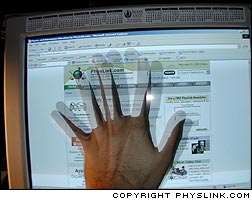Wire Maze Electricity DIY STEM Kit
$9.99$5.55
 Television screens and monitors refresh their image at a certain rate, called the refresh rate and which have units of inverse seconds, or Hertz. The refresh is needed in order that the screen can show moving pictures. A good way of think of the refresh is a snapshot of an image that is displayed very quickly. If the number of displays per second are increased, that corresponds to a higher refresh rate. Now, each snapshot is 'flashed' for a short amount of time, sort of like the flash bulb of camera going off. If the number of flashes per second is high enough, your brain will interpret this as a constant light source. For instance, if you look at your monitor you will see a steady light coming from it. In reality the monitor is producing anywhere from 60-100 'flashes' per second.
Television screens and monitors refresh their image at a certain rate, called the refresh rate and which have units of inverse seconds, or Hertz. The refresh is needed in order that the screen can show moving pictures. A good way of think of the refresh is a snapshot of an image that is displayed very quickly. If the number of displays per second are increased, that corresponds to a higher refresh rate. Now, each snapshot is 'flashed' for a short amount of time, sort of like the flash bulb of camera going off. If the number of flashes per second is high enough, your brain will interpret this as a constant light source. For instance, if you look at your monitor you will see a steady light coming from it. In reality the monitor is producing anywhere from 60-100 'flashes' per second.
 'An expert is someone who knows some of the worst mistakes that can be made in his subject and how to avoid them.'
'An expert is someone who knows some of the worst mistakes that can be made in his subject and how to avoid them.'